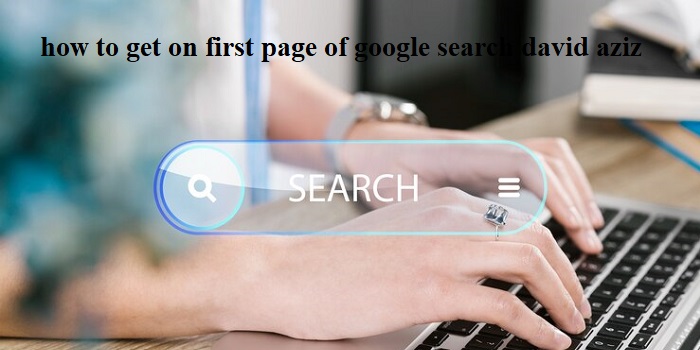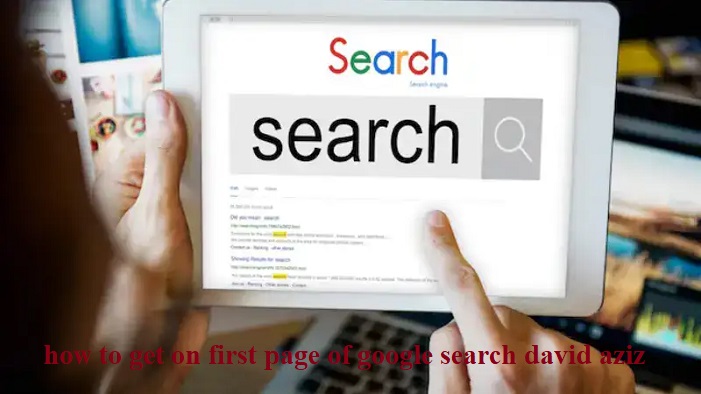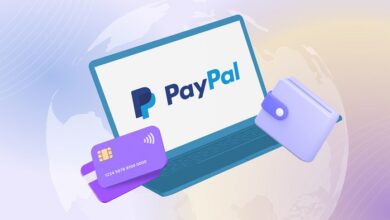How to Get on the First Page of Google Search David Aziz

Getting on the first page of Google is a goal many website owners dream of achieving. It’s where the magic happens — more traffic, better visibility, and potentially more business. My name is David Aziz, and I’ve spent years learning the strategies to make this happen. Let me guide you through some simple steps that can help you achieve this for your website too.

Why the First Page of Google Matters
The first page of Google is where 90% of searchers find their answers. If your website isn’t there, you’re missing out on a huge opportunity to connect with your audience. Let’s break down the steps you need to take to make sure your site gets noticed.
1. Understand What Your Audience is Searching For
The first step is knowing what your audience wants. This is where keyword research comes in. Tools like Google Keyword Planner, SEMrush, or Ubersuggest can help you find:
- Keywords people are searching for.
- How competitive those keywords are.
- How often they are searched monthly.
Choose keywords that are relevant to your business and have a balance of high search volume and low competition.
2. Optimize Your Content for SEO
SEO (Search Engine Optimization) is the process of improving your site so it ranks higher in search results. Here’s how to do it:
Use Keywords Strategically
- Include your main keyword in the title, headings, and throughout the content naturally.
- Avoid keyword stuffing. Google rewards quality, not spam.
Write Engaging and Useful Content
- Solve your audience’s problems or answer their questions.
- Aim for longer, in-depth posts (1,000+ words) as they tend to rank better.
Optimize Your Meta Tags
- Write a compelling meta title (this is what shows up on Google’s search results).
- Keep the meta description under 160 characters and include your keyword.
3. Improve Your Website’s User Experience
Google wants to give users the best experience, so your website needs to:
- Load quickly (under 3 seconds is ideal).
- Be mobile-friendly (most people browse on their phones).
- Have easy-to-navigate pages.
Use tools like Google’s PageSpeed Insights to see how your site performs and fix any issues.
4. Get Backlinks from Trusted Websites
Backlinks are links from other websites to yours. They show Google that your site is trustworthy and valuable. Here’s how to get them:
- Create shareable content: Write blog posts or guides people will want to link to.
- Reach out to bloggers or websites in your industry and ask them to link to your content.
- Guest post on reputable websites to get links back to yours.
5. Keep Updating Your Content
Google loves fresh content. Regularly update your blog posts and website pages to keep them relevant. Add new stats, examples, or tips to improve their value.
Florida Gov. Ron DeSantis Announces New Law Against Squatters
6. Track Your Progress
Use tools like Google Analytics and Google Search Console to see:
- How much traffic you’re getting.
- Which keywords are driving traffic.
- Where you can improve.
By monitoring your performance, you can tweak your strategies to get even better results.
Final Thoughts
Getting on the first page of Google takes time and effort, but it’s absolutely worth it. By following these steps — from keyword research to optimizing your website — you’re setting yourself up for success. Read More





